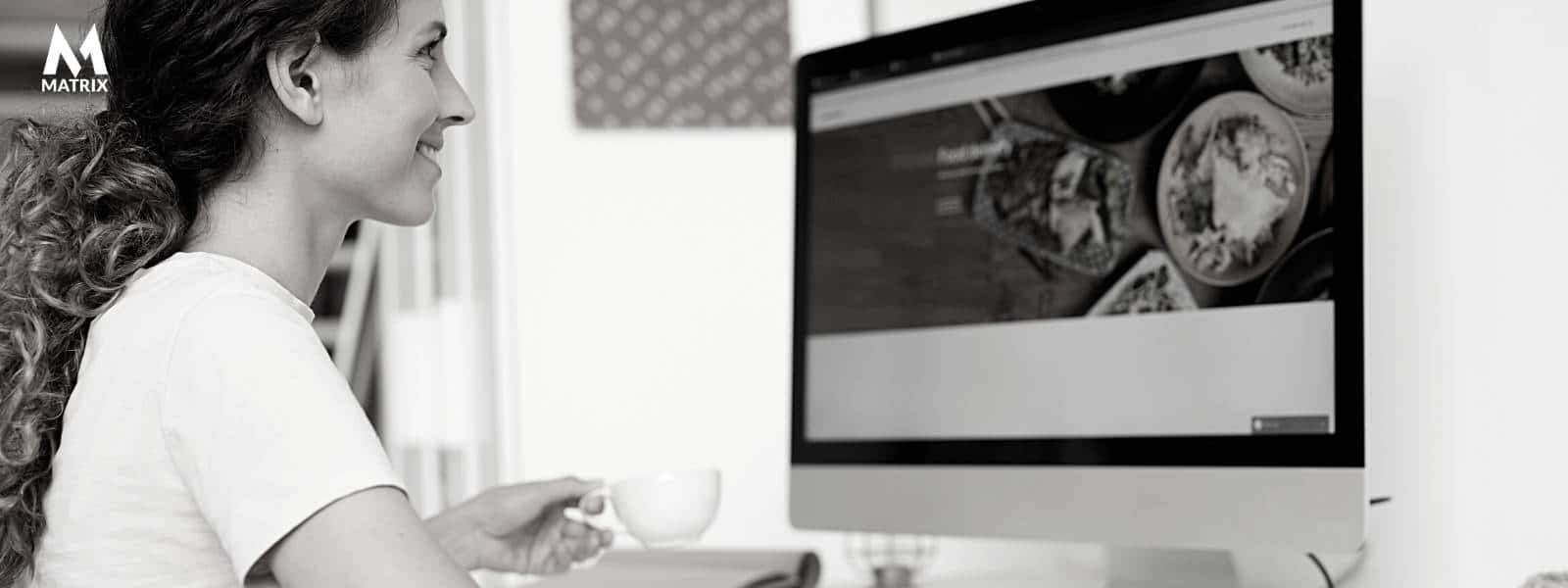Minimalist web design can drive more visitor conversions
Minimalist web design can drive more visitor conversions and clicks. Website design is an aspect of the online presentation that is a point of vigorous discussion among all graphic designers and digital marketers.
In the past three decades of the Internet’s ascension, the visual tastes of web designers have changed immensely, just like with any other kind of design, such as interior or fashion. This is something that is bound to change even more over time.
However, currently, one of the biggest favorites is a minimalist design style, encapsulated to make the user interface and the presentation of website content as simple as possible.
But, while this is undoubtedly the most popular style found in web design today, the question is does it hold up to scrutiny as the worthiest kind of design? We will explore the pros and cons of such templates below.
Minimalist Style Basics

Before going deeper into the pros and cons of a minimalist web design template, we’ll go over what such a design entails first.
The point of minimalist design is to get rid of any extra menus, tabs, or general content that doesn’t serve a purpose in terms of the user experience on the website. If it doesn’t support a discernible user goal or need — it has to go. It’s as simple as that.
Minimalism in design is just like minimalism in other works of art, such as literature, music, or painting. This art direction aims to keep only the must-have elements, and the same goes for such web design.
If you want to achieve the successful usage of a minimalist web design template, you must strip away everything that you — or rather, your users — genuinely don’t need.
Forget about multiple pop-up videos or a plethora of different tabs in which the content is divided. Many of these designs opt out of the traditional navigation via dropdown menus. Instead, they utilize a more streamlined scroll-down experience.
When you’re thinking whether or not to keep a website element or an aspect of your current design, approaching the issue from the perspective of minimalism means asking yourself one important question: does this element help me achieve the website’s goal in a meaningful way?
The answer differs depending on whether you’re looking to start a digital marketing campaign on your website, build a long-term online store, or create a storytelling platform.
Minimalist Design Traits

As you can see, there are plenty of distinct purposes that a website can have — meaning that there are different ways and degrees of minimalist design that you may want to implement. However, there are a couple of telltale signs of minimalist design that all such websites possess.
Empty Space on Minimalist Web Design
For starters, it’s not always about what’s there — it’s just as much about what isn’t. Negative space is the most often used element in all minimalist web design templates. An abundance of empty space makes each element that is present more distinct and eye-catching.
Websites that want to promote a political or social cause often utilize this technique — with a lot of empty room dominated by a clear, simple message. That way, the message resonates deeply with anyone who visits the website.
Huge Images
One of the other often employed elements of minimalist web design are large images and videos — also regarded as “hero images.†Sometimes, a textual message across a blank page just isn’t enough. When you’re trying to kickstart a new digital marketing campaign for a flashy brand, stark visuals are a must-have.
Many websites do this without sticking to minimalist design principles by cluttering their space with tons of images. And while there are some great plugins to help you organize photos, this is not optimal if you’re aiming for a minimalist design. Instead, using one or two large images that dominate the entire page is far more effective. You still manage to create a visual presence but without bombarding the user with tons of images.Â
Typography and Contrast
Most design professionals will agree that the devil is always in the details. While having the big picture in mind is crucial when it comes to style, smaller and less intrusive elements can make or break your design.
Your website’s color spectrum is a big part of that. Stark contrasts — the most obvious one being black and white — are often used to make a website stand out among its peers. Bold color solutions can create a sense of uniqueness that’s important in basically every niche.
And speaking of bold, another significant website element is typography. Even if you don’t have a lot of text on your website, your words’ font, size, and color will matter. We could make a case for your text’s visual style being more important if there’s less of it.
Pros and Cons of Minimalist Web Design

Now that we’ve gone over the essential tenets of minimalist web design, we’ll go over the pros and cons of utilizing this particular style on your website!
Advantages of Minimalism in Web Design
The single most significant advantage of minimalism is the simple fact that it’s excellent for lead conversion.
In many cases, marketers and product vendors wish to create a website that’s going to promote a product or service and compel prospective leads to make a purchase. This conversion from leads to customers is the pinnacle of online advertising.Â
The websites created for the promotion of a single product are built according to the principle of sales funneling. This is one of the oldest marketing techniques. However, funneling entails creating a website with an extremely streamlined user experience when translated into the world of online marketing.
The web designer and marketer plan out each user interaction on the website, from the second they land on the homepage to the final moment when they decide to purchase the product.
For this type of website — which is quite widespread in online marketing — there is no better design than a minimalist one. Having the bare minimum of website elements and a clear-cut visual style means that visitors have fewer opportunities to veer off the beaten path.
It’s important to note that the average website visitor’s attention span is incredibly short, and it’s getting even shorter. That means that a website doesn’t have a lot of time to make a first impression and retain visitors.
That’s why minimalism is excellent in this regard — it doesn’t beat around the bush and avoids providing unneeded content to website users.
Stripping a website of excess elements and unnecessary functionalities lets users see what’s useful on the website and appreciate it more. Any call to action is far more meaningful when a visitor is not overwhelmed with a ton of different options.
It’s not all about more straightforward navigation, either — minimalism is an excellent choice from a technical point of view as well. The bane of every successful website are downtimes or sluggish loading times.
These are the primary culprit when it comes to substantial bounce rates — people simply hate waiting for a website to load in 2020. They’re far more likely to choose another competing website from the same niche instead.
With minimalism, page speeds are lighting-quick — at the end of the day, there’s not too much content for the website to load.
If you’re trying to get the branding of a new product off the ground with a dedicated website, avoiding high bounce rates is of immense importance, making minimalist design a decent choice.Â
Moreover, search engine optimization is crucial for any long-term online campaign. As any SEO expert can tell you, optimizing a sprawling, the cluttered website is an absolute nightmare.Â
Conversely, Google’s algorithm and crawl bots can go through a minimalist website far more efficiently, meaning that optimizing it for top results in the relevant keyword niche is simpler. On such websites, the amount of code clutter in the backend and frontend is minimal.
Plus, when Google ascertains the ranking of a given website, it takes some of the abovementioned factors into accounts — such as the loading speeds and the overall user experience. All of these are simpler to optimize with a minimal website.
We should note that technical ease is great about minimalist websites across the board. Regardless of what technical aspect we’re talking about — paraphrasing Occam’s razor, a more straightforward website is far less likely to break down.
Finally, while the tastes and fads in web design are bound to change, it will be a long while before minimalism appears outdated. The strength of a design style rests on its elements — and simplistic visual representations innately appeal to humans, from the Neolithic cave drawings to the present day.
Drawbacks of Minimalist Web Design
So far, we’ve only talked about the positive sides of minimalist web design. However, just like any other style, it’s not perfect — and it has its downsides as well.
There are reasons why not every business or non-profit enterprise can use this to convey their message online.
In other words — the communication you can achieve with minimalist web design is severely limited. Suppose you’re trying to sell a service or product that’s extraordinarily complex or specific to a rare niche. In that case, you won’t find it easy to convey your selling points using a minimalist website with a small amount of text and visuals.
While minimalism is excellent for sales funnels that focus on one product or a single product line, a content-rich online storefront isn’t easy to create in minimalist webspace. If your website is supposed to enable sophisticated interactions from users, another approach will be needed.
Also, while minimalism can objectively be a good thing, we can’t help but mention that not every designer knows how to do it right.
Nor does every client who wants a minimalist design realize that it’s not well-suited for their purposes. With a wrong approach to minimalism, your website may end up looking sparse — even unfinished. There’s a thin line between pleasantly clean and woefully deserted.
Minimalism is also not always the best design choice when it comes to creative individuals and projects. While such a design can convey a creative message, some artists and companies don’t have an image and a brand that goes well with a small amount of content.
The target audience may not be used to a lack of flashiness and an abundance of visuals and text, making it the wrong choice.
Finally, this sort of design may be lacking if you’re using your website to market a growing company. As it scales up, the minimalism may prove to be more of a hindrance than a clever marketing ploy. Of course, proper planning can eliminate this danger in most cases.
Is Minimalism Web Design The Right Choice?

As you might have guessed already, there isn’t a single, universal “yes†or “no†answer. It all depends on your needs and on what you expect from the website, as well as your web designer’s skills and your visual tastes.
If you ask a business consultant who’s working with an online store owner, you probably won’t hear them singing praises about minimalism because that’s simply not what they need.
On the other hand, an up-and-coming musician or photographer may find such a design style just what they need to show their worth to the public.
For those still unsure, the best litmus test for minimalism is to consider what your end-user wants. If you have customers, what kind of style do you think they appreciate?
Remember, you’re not creating the website for yourself — you’re creating it for the visitors, so make sure you put their tastes and needs before your own.
We’re listening.
Have something to say about your thoughts on minimalist web design?
Share it with us on Facebook, Twitter, or LinkedIn.
General FAQ’s
What is a minimalist design?
Minimalism is a visual concept that never goes out of style. It has been around for over 60 years, and it’s still relevant today. The main idea in minimalist design is to say more by showing less. Minimalist design is clean, crisp, and timeless. Unnecessary objects and flourishes are left on the drawing board. Only the necessary is included to get the message across.
What is a minimalist web design?
Minimalist design has been described as design at its most basic, stripped of superfluous elements, colors, shapes, and textures. Its purpose is to make the content stand out and be the focal point. From a visual standpoint, minimalist design is meant to be calming and bring the mind down to the basics.
What is the minimalist style?
Minimalist fashion is defined by one primary principle: keep it simple! Modernized shapes, a small selection of colors, and even a bare minimum amount of clothing in your closet. Simplicity is the key to pinpointing this style. Keep reading to learn more about minimalist style.
What is website design?
Web design refers to the design of websites that are displayed on the internet. It usually refers to the user experience aspects of website development rather than software development.



